One usually associates Manuka honey with New Zealand but you may be surprised to know Australia has their own anti-bacterial MGO honey too.
New Zealand has marketed this highly medicinal product well and taken ownership in a bid to have the name trademarked as theirs. I posted about it a few months ago when it was in the news to find out what makes this honey so special. True to Taste But is Your Manuka the Real Deal?
Its high healing properties have made manuka a big commodity. We know raw honey (unadulterated and unpasteurised) is good for us, but the science and testing behind manuka shows it is particularly beneficial for topical wounds and skin care as well as good for the gut and overall health.
So stepping out of the shadows is Australia with over 80 varieties of the leptospurmum plant, or jelly bush as the ‘Aussie’s’ call it. A growing number of environmentalists, health practitioners and honey enthusiasts are ready to change people’s awareness. Matt Blomfield, founder of Gatherby a food security and agri-business brought this to my attention after visiting Dubai and seeing Balqees in the malls. He invited me to visit Sydney so he could show me the work he and his team are doing. For me, looking to build a medicine cabinet of honeys from around the world, like a honey bee foraging for nectar, I jumped on the first available A380 and headed to Australia to meet the team and the producers behind Gatherby’s mission.
With the tag line, ‘community, environment, healing’ Matt and co-founder Jenna Ford setup Gatherby four years ago with a mission to build a sustainable Australian Medicinal Honey, an ethical business and product.
With dwindling numbers of bees around the world and with one in three mouthfuls of our food being linked to the honey bee they wanted to do something to protect the bees. Interestingly, Australia is one of the few places in the world that doesn’t have the disease varroa threatening the colonies and so another feather in the cap for pushing their honey forward as a healthy sustainable choice.
The business of beekeeping has been tough in recent years in Australia with large corporations driving the prices down and forcing many family run businesses out as they are struggling to make a living or compete with large commercial farmers.
With all this in mind Gatherby was born with an end to end agri-business solution, connecting like minded people in Australia and around the world with a common goal to preserve the environment, the honey bee and the food chain in producing and supplying high quality honey.
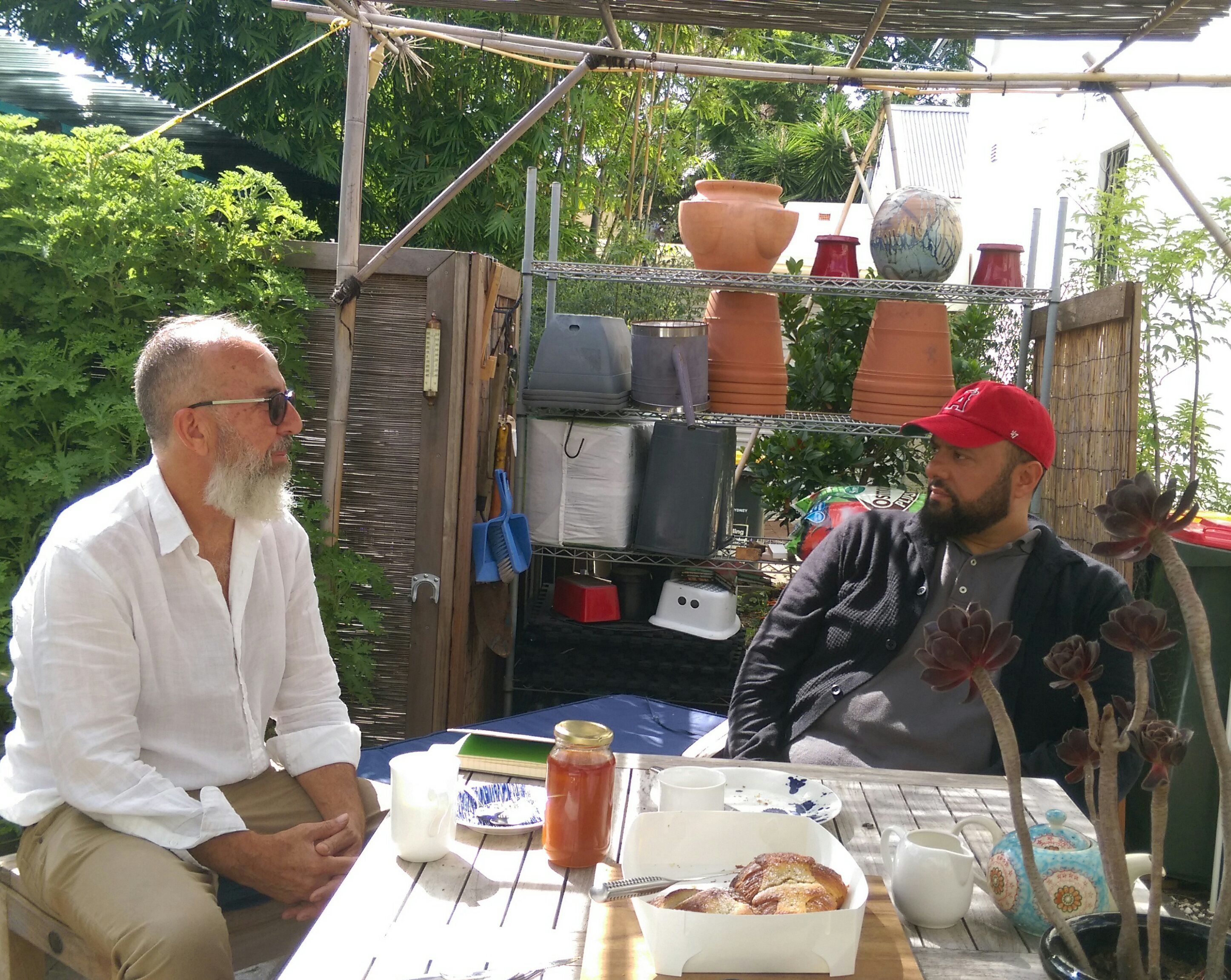
Talking with Matt Blomfield of Gatherby in his urban sanctuary in Sydney. He even has a bee hive on his roof!
Matt and I and the Gatherby team headed out to the bush and the rural areas of New South Wales and Queensland covering over 2000 km to meet some of the landowners and beekeepers who are working with Gatherby.
Medicinal Honey Forest
Manuka is a Maori term yet some of the beekeepers I met in Australia claim they had the plant and plenty of it before New Zealand. I was told many an Australian farmer cleared this spiny, hardy plant thinking it a nuisance to their land and not realising the value. Some might say Australia has been late coming to the table and their New Zealand counterparts way ahead in the game of manuka. The team and stakeholders at Gatherby are aiming to change that collaborating with landowners, beekeepers and with indigenous groups as part of reconciliation (as the leptospurmum is an Australian native bush) as well as working with nurseries to propagate more of the plants.
So lets just clarify the science on this. The leptospurmum is the plant that gives us this highly medicinal honey with tests showing that 15 species in Australia carry the high DHA (molecule) that cause the antibacterial healing qualities. Bees forage on these plants for nectar carrying the DHA to the hive where excreted from their mouths is converted to MGO (methylglyoxal). This is what gives the potency. As explained in my previous post understanding the UMF stamp on jars and labels with any number over 10 gives you the potency value.
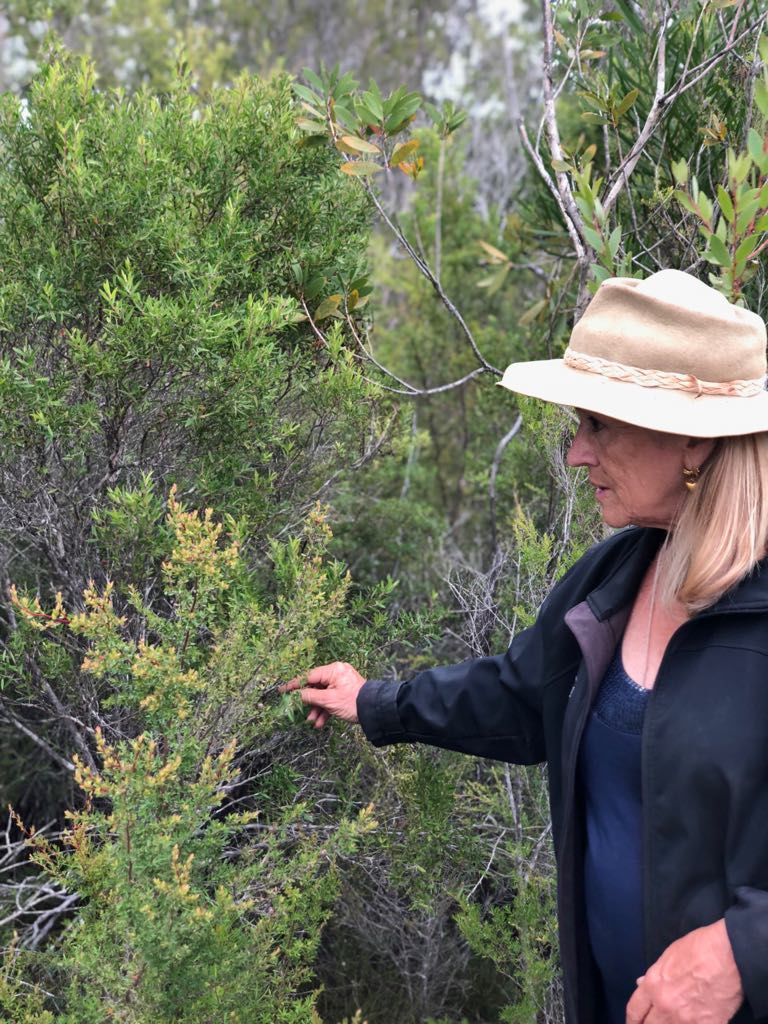
Jenna Ford, co-founder of Gatherby walking me through a wild medicinal honey forest and explaining the different varieties of leptospurmum.
The Landowners
The landowners sign up to regenerate their land with planting programmes and the support of Gatherby putting in place pollinator havens to produce medicinal honey. They currently have 30,000 licensed plants from the nurseries going to landowners with a view to having 12.5 million plants in the next five years. After year one or two of the planting the hives are placed on the land and the honey making process begins. Gatherby then buys the honey at a fair price from the landowners/beekeepers and sell it on currently within Australia and aiming to take it to the world market.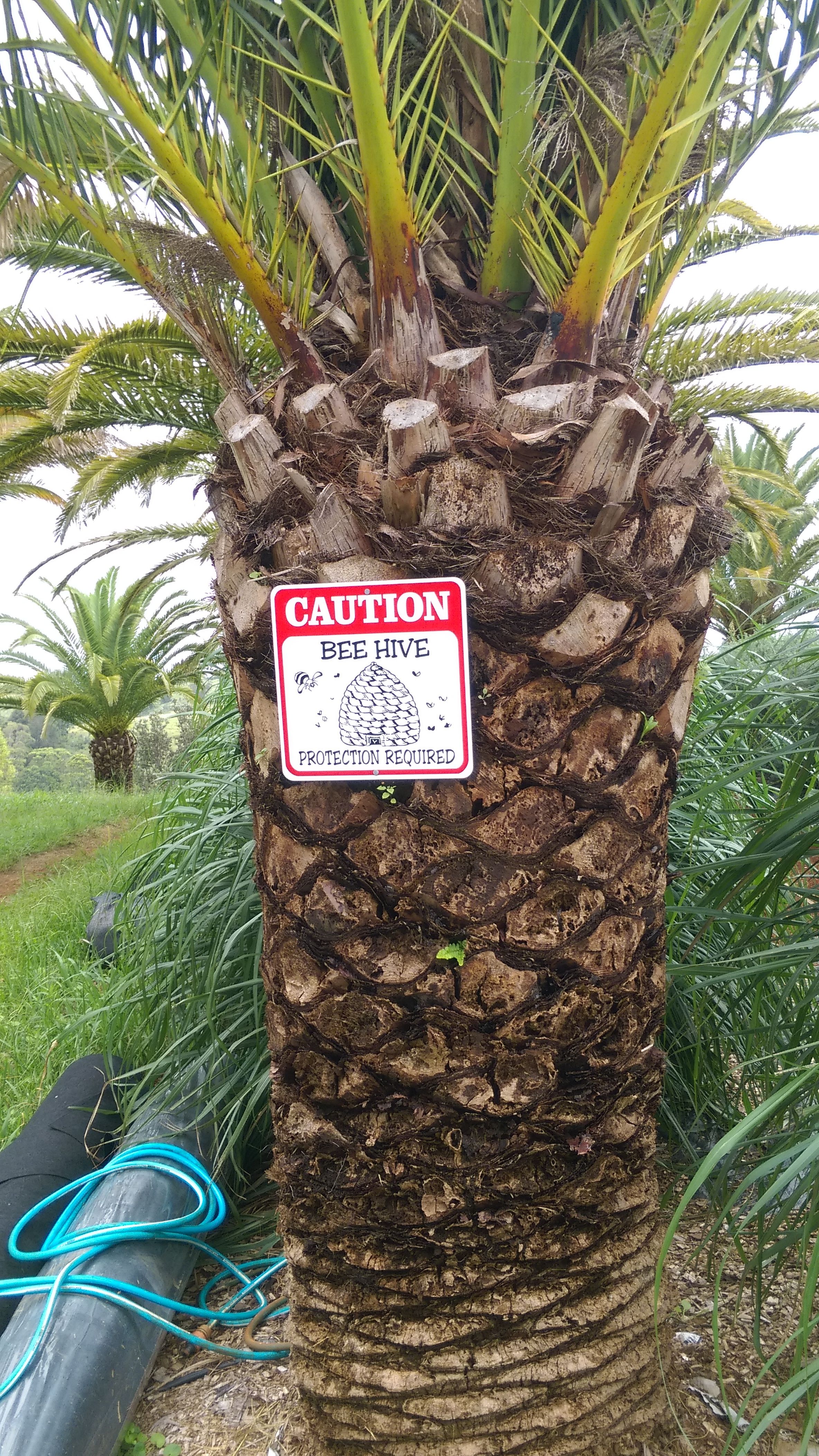
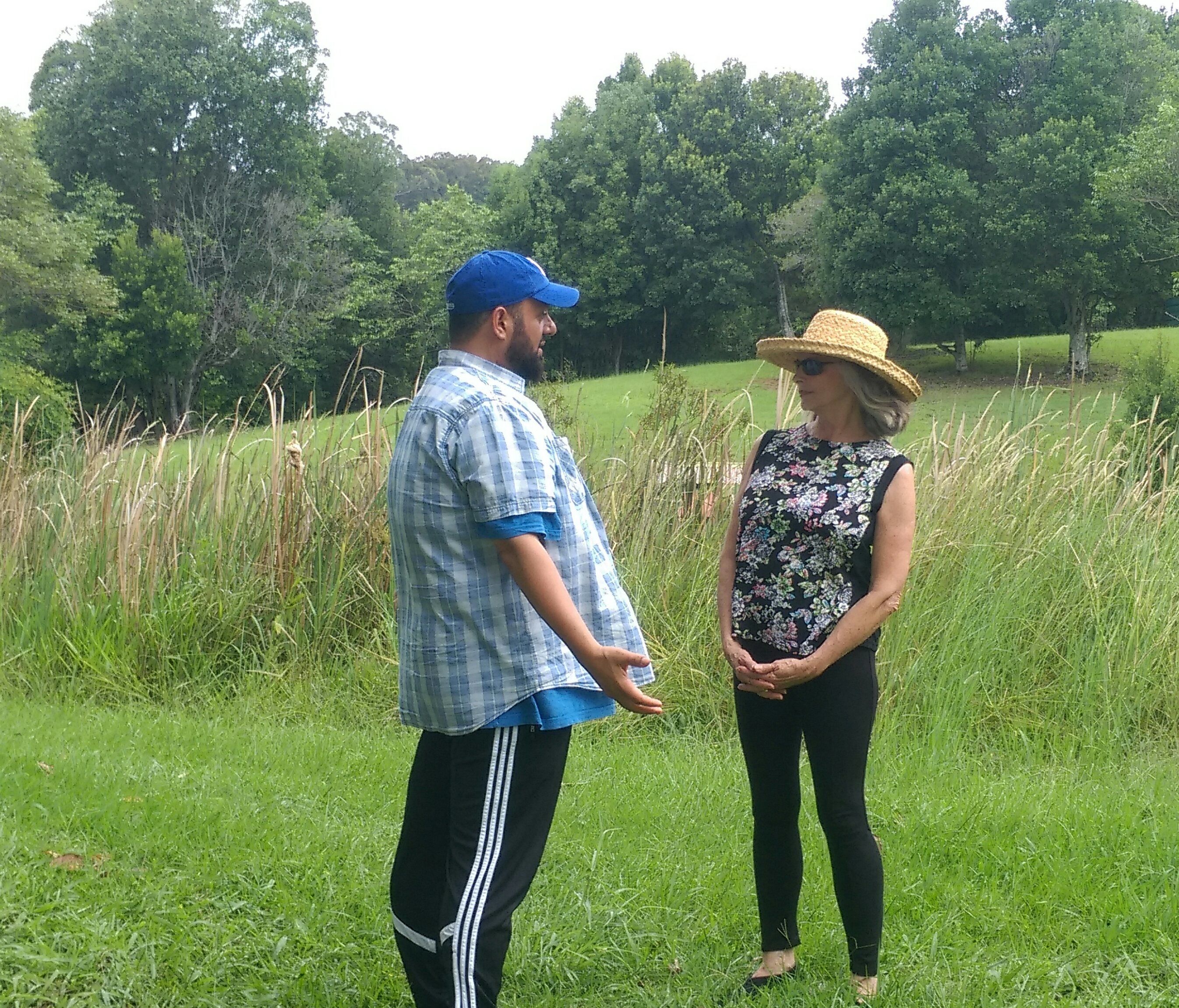
Chatting to Delvine Delaney a landowner near Byron Bay about living a healthy balanced life which is why she is behind the Gatherby initiative and protecting ‘little pharmacists’ the bees.
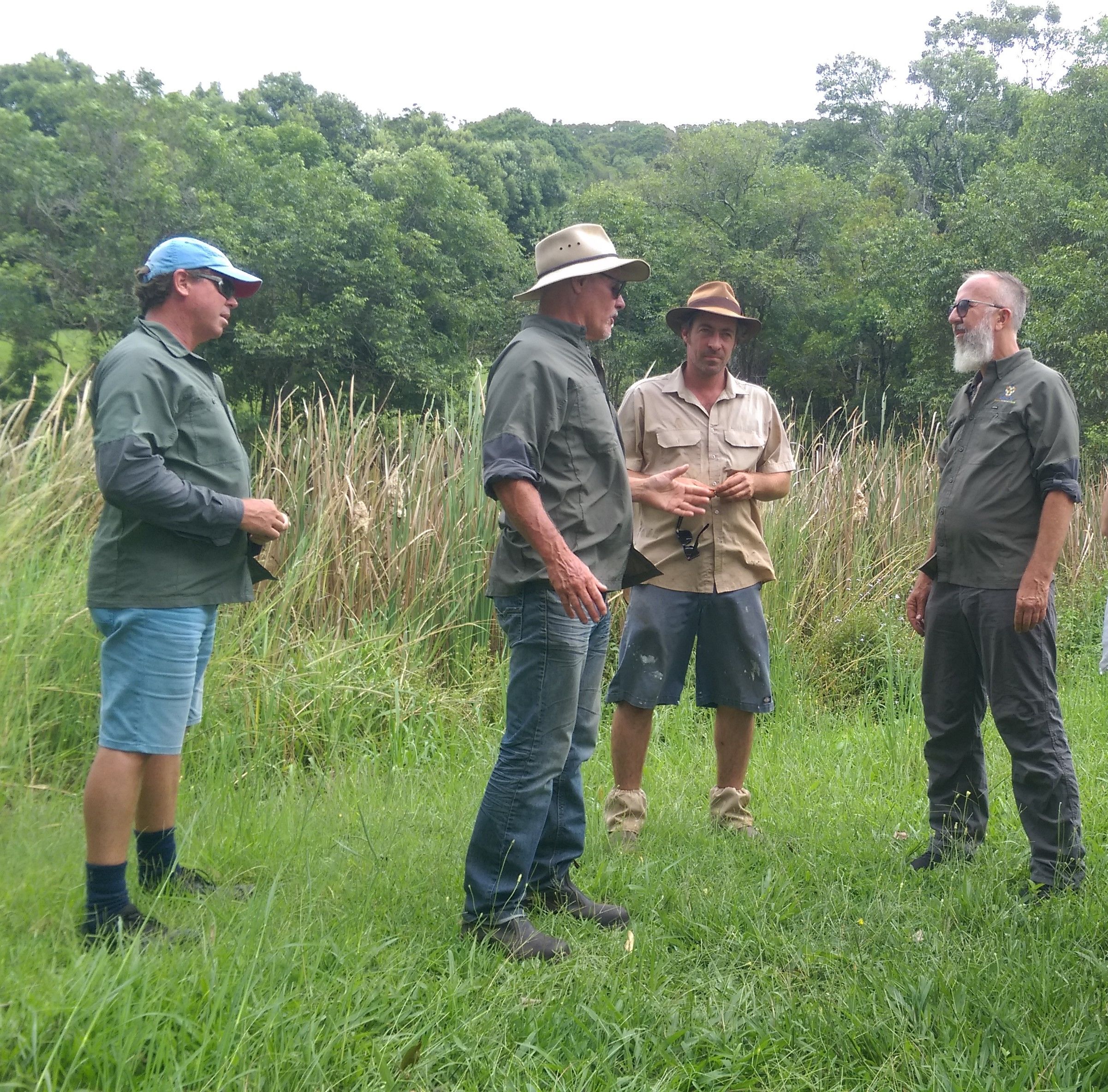
Company Founder Matt, director Tony Stubley & horticulturalist responsible for plant implementation Kieran Bailey with one of the landowners inspecting a planting site.
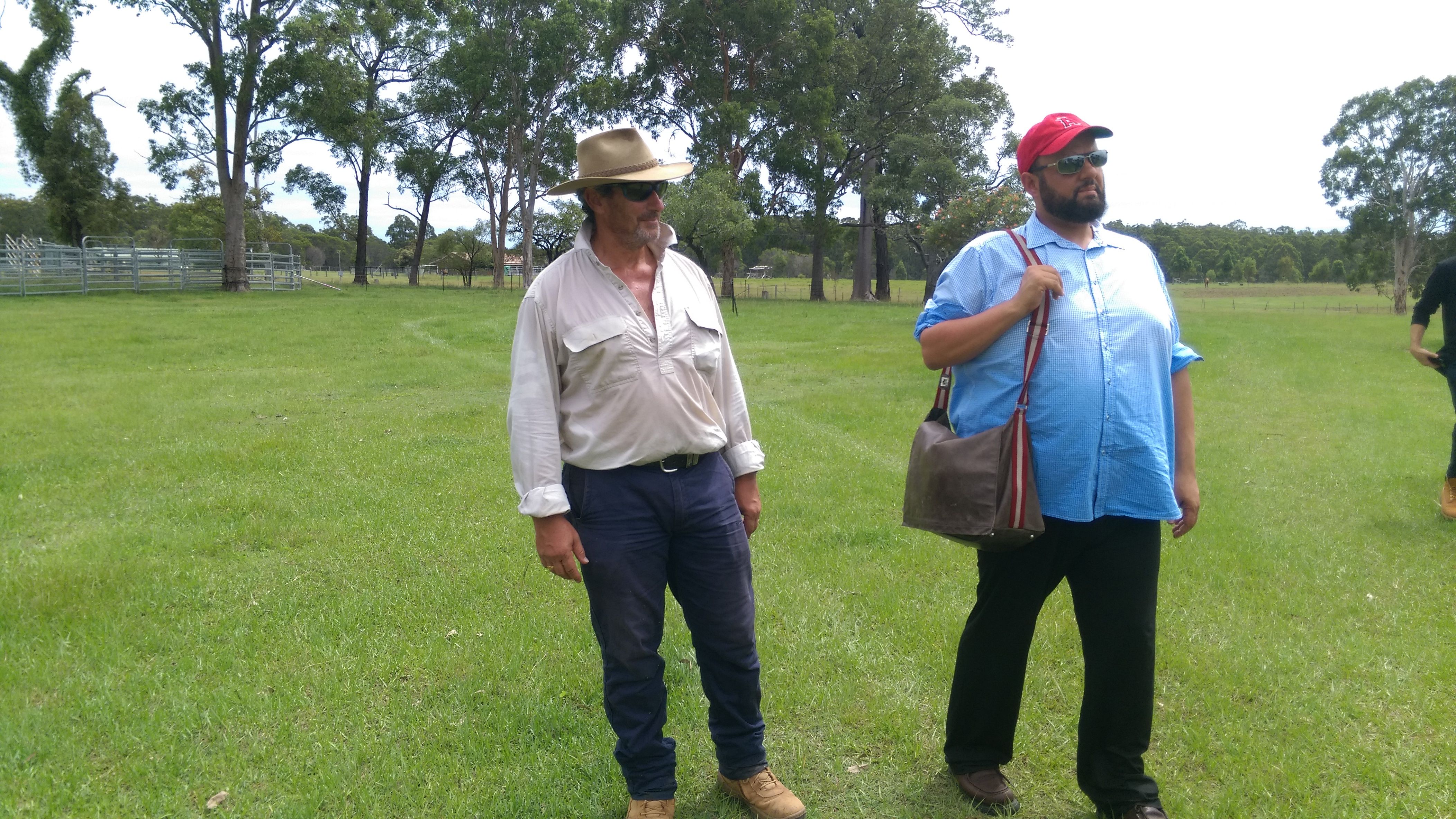
With Herbert who is making a dream come true having just brought land to farm and keep bees.
The Beekeepers
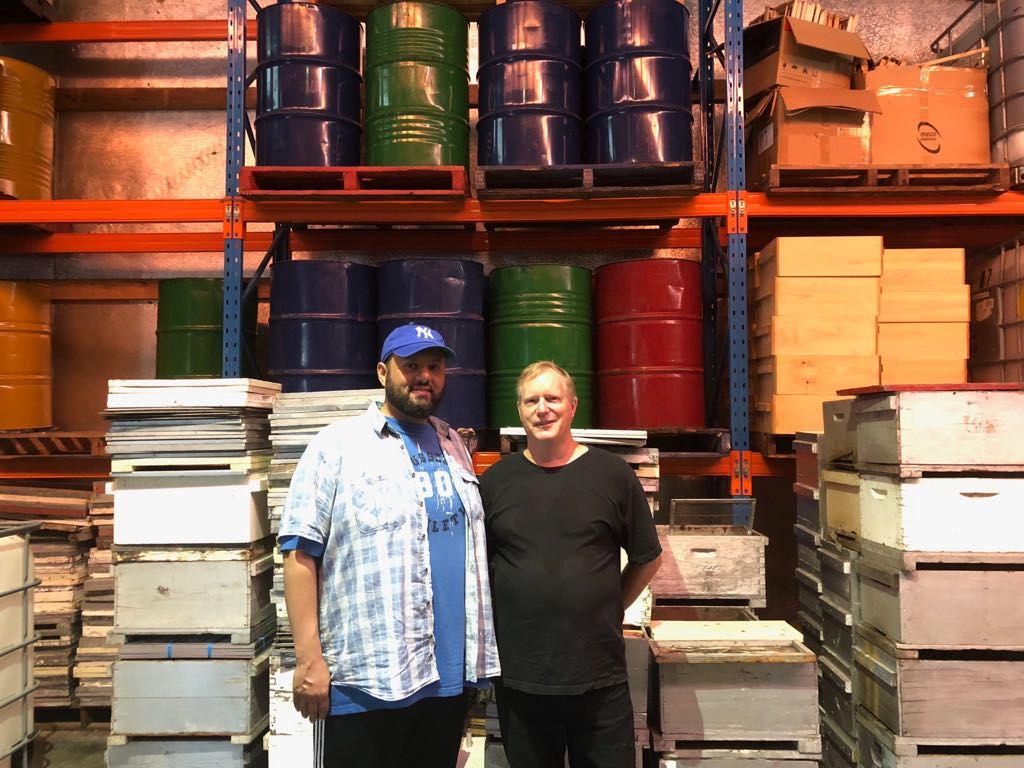
With Michael Howes who was one of the first beekeepers to embrace the science behind Australian medicinal honey (and he’s originally from New Zealand).
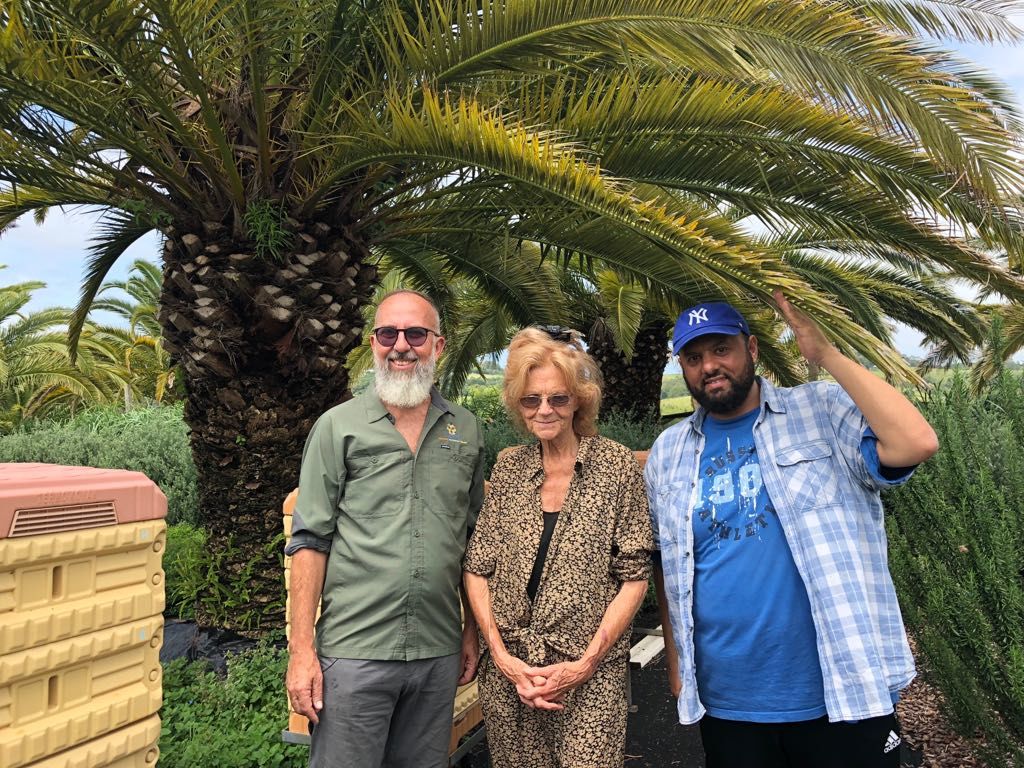
With Matt and the amazing Gabrielle Morley on her property and little piece of paradise. I have never seen such attention to detail when keeping bees with such a diverse range of plants and nectar for the bees to forage on.
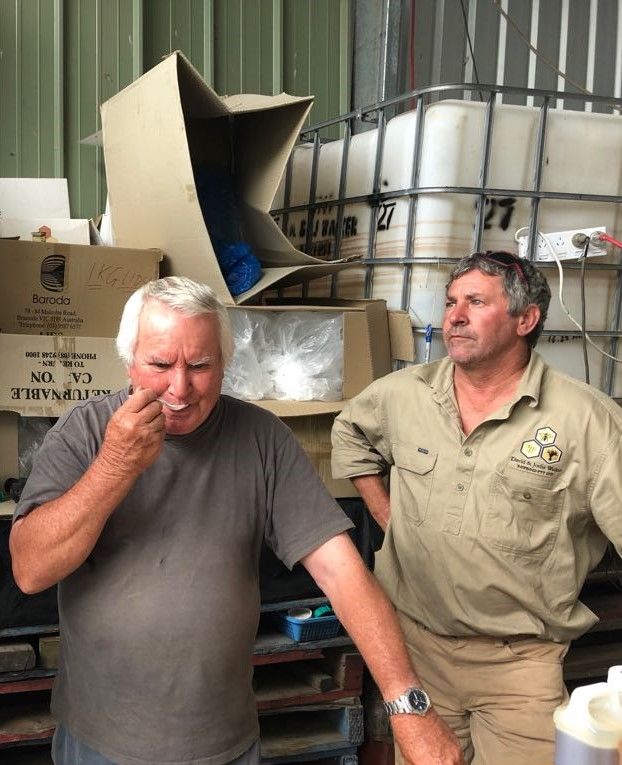
A tasting with the Walkers, considered beekeeping royalty, with a family going back four generations in bees. They have survived when many family businesses haven’t.
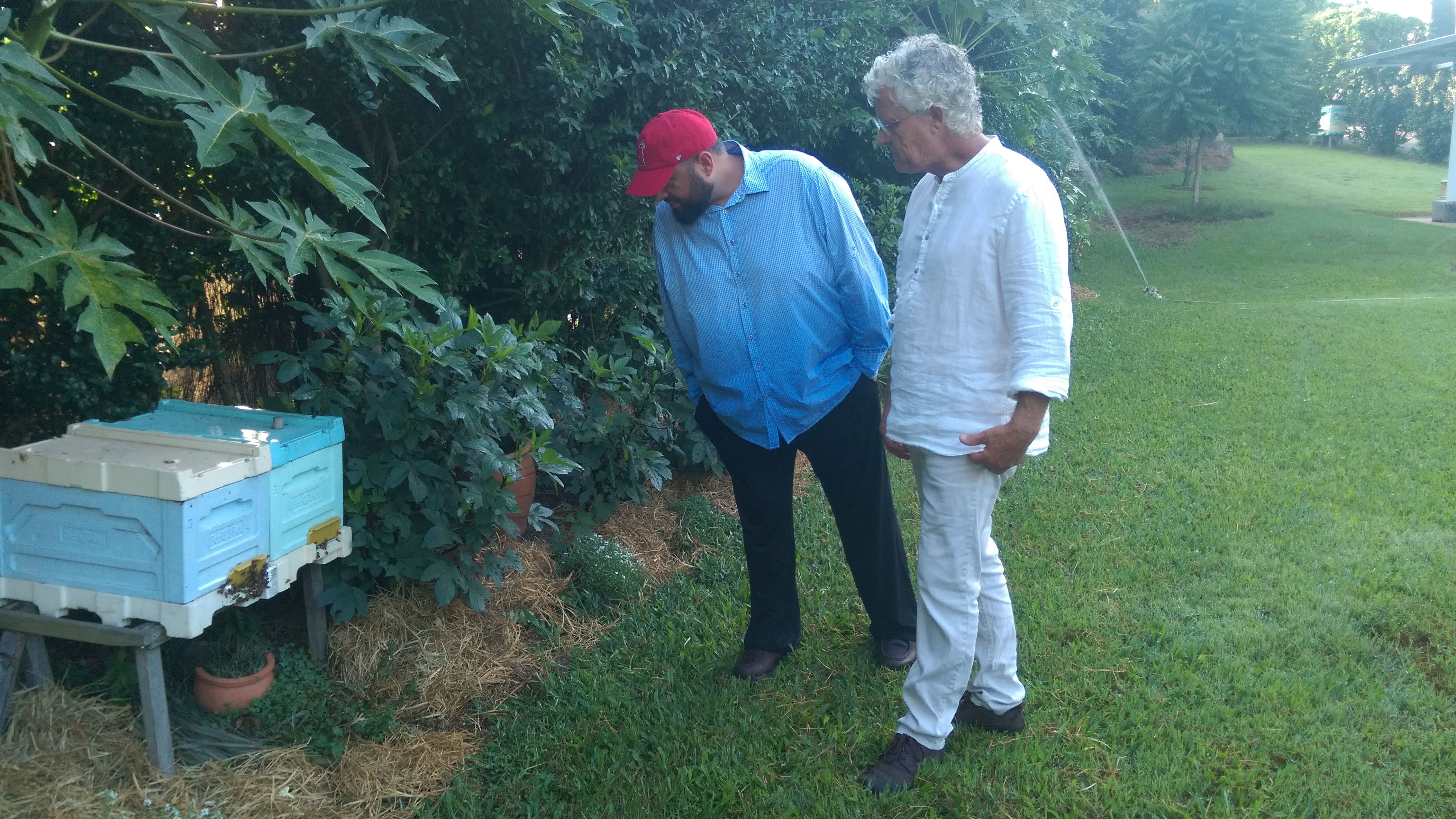
Jeoffrey Gibbs shows me around his site and garden. He sells the most amazing natural beewax. Jeffrey is one of the leading experts in Australia having kept bees since he was 18 and inherited 2000 hives from his mentor at the age of 28. He is fiercly supportive of beekeeper rights and against the big conglomerates driving down prices for beekeepers.
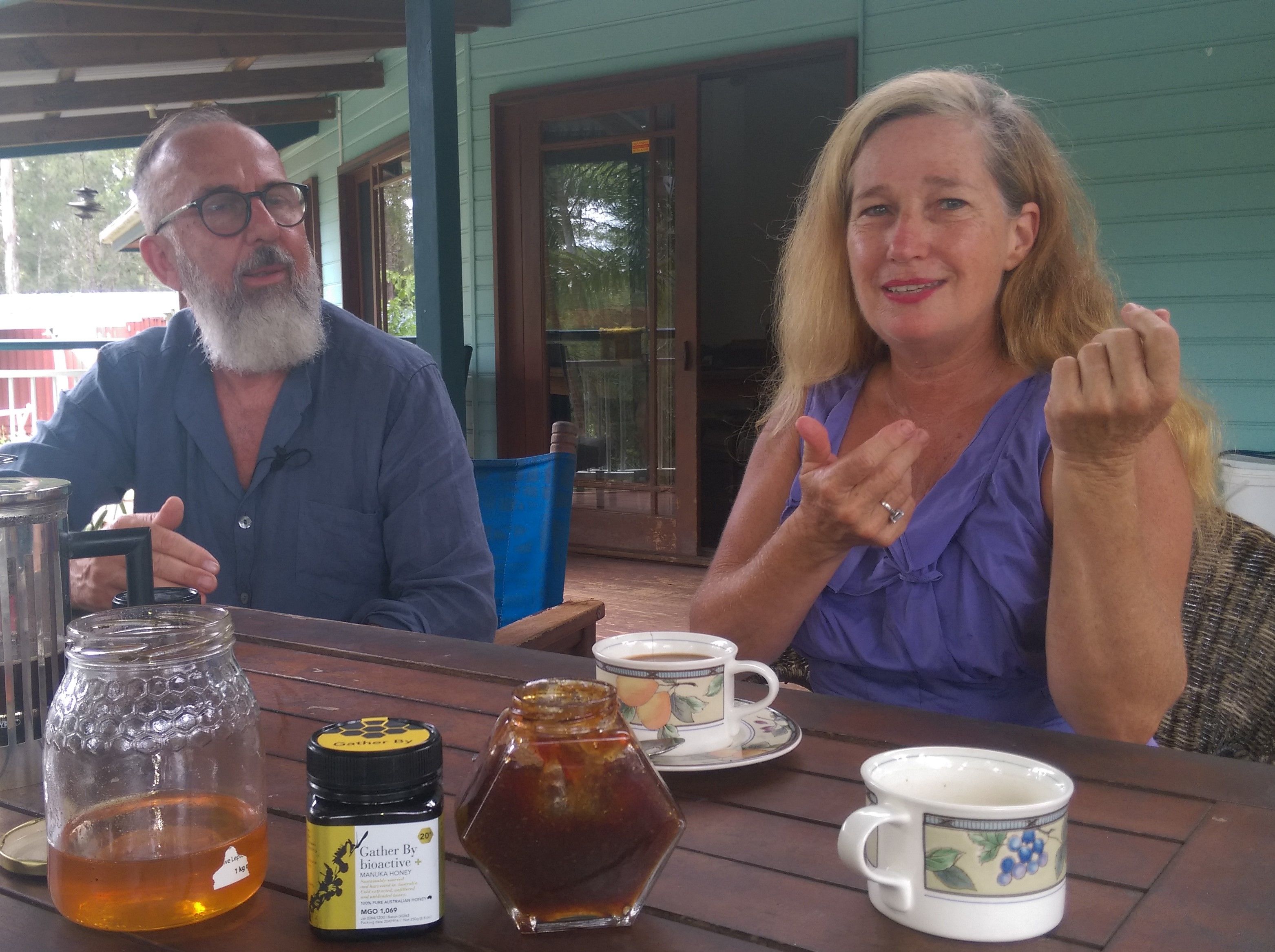
Tea and honey with beekeeper Marie Chapman who has amazing high potency honey. She talks about the instinct honed as a beekeeper over many years to recognise any issues and how pleased she is to be working with Gatherby bringing the leptospurmum test planting site to her property.
The Honey
For me high potency medicinal honey doesnt always have the best taste profile but it does have the health benefits. I loved the Walkers Red Stringy Bark which reminded me of Balqees Sidr. This honey is highly medicinal and can be used as a natural remedy for all manner of ailments. Marie’s honey was amazing too, we tried one that had a MGO of 11.71 and a UMF of 25. You can taste natures magic, the medicinal qualities and herbs. Gatherby is making all the right connections as they are on their way to building a successful business where all the stakeholders are paid fairly and producing a raw, potent, medicinal product to help treat humans and animals in a natural way.

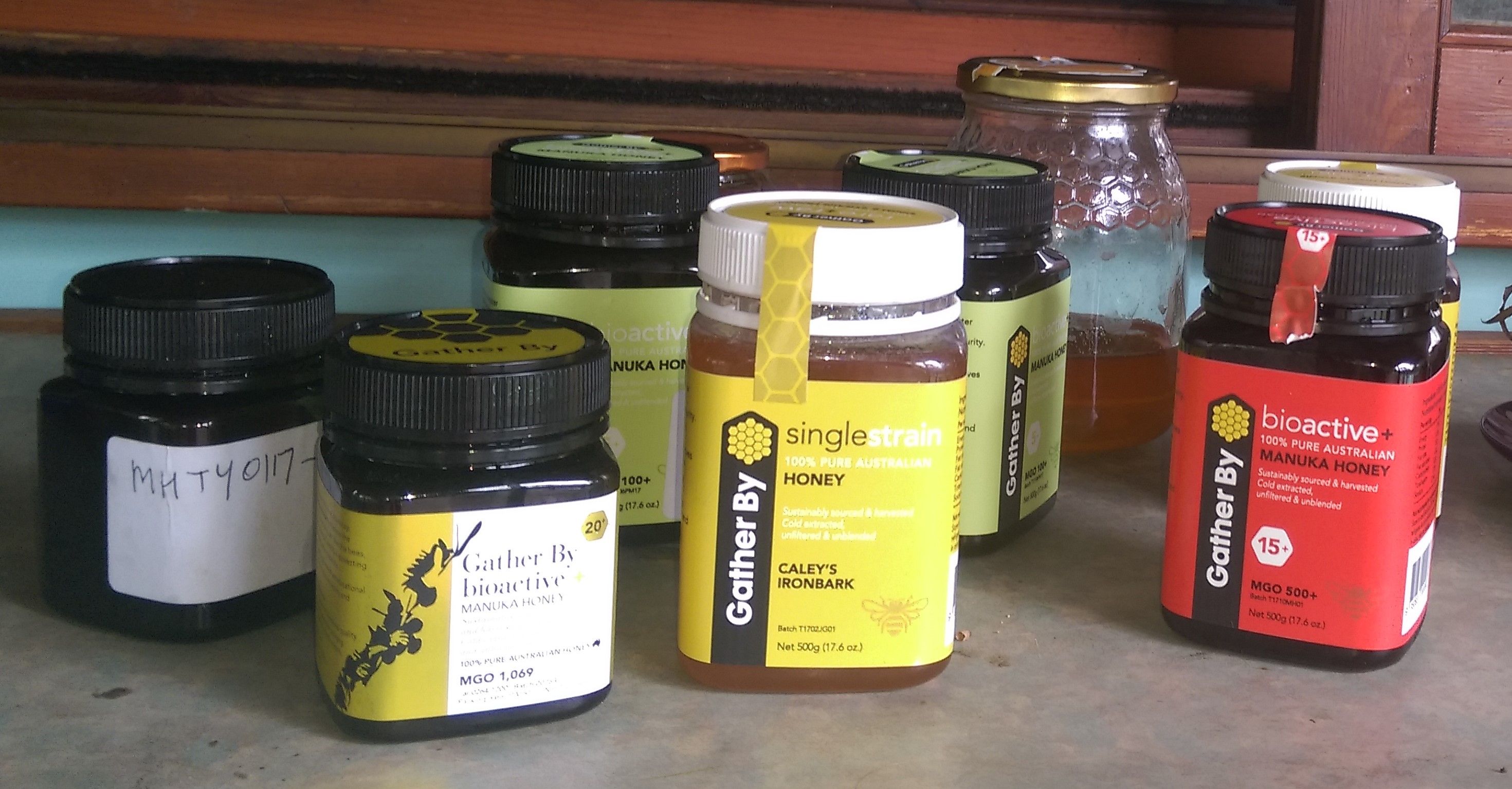
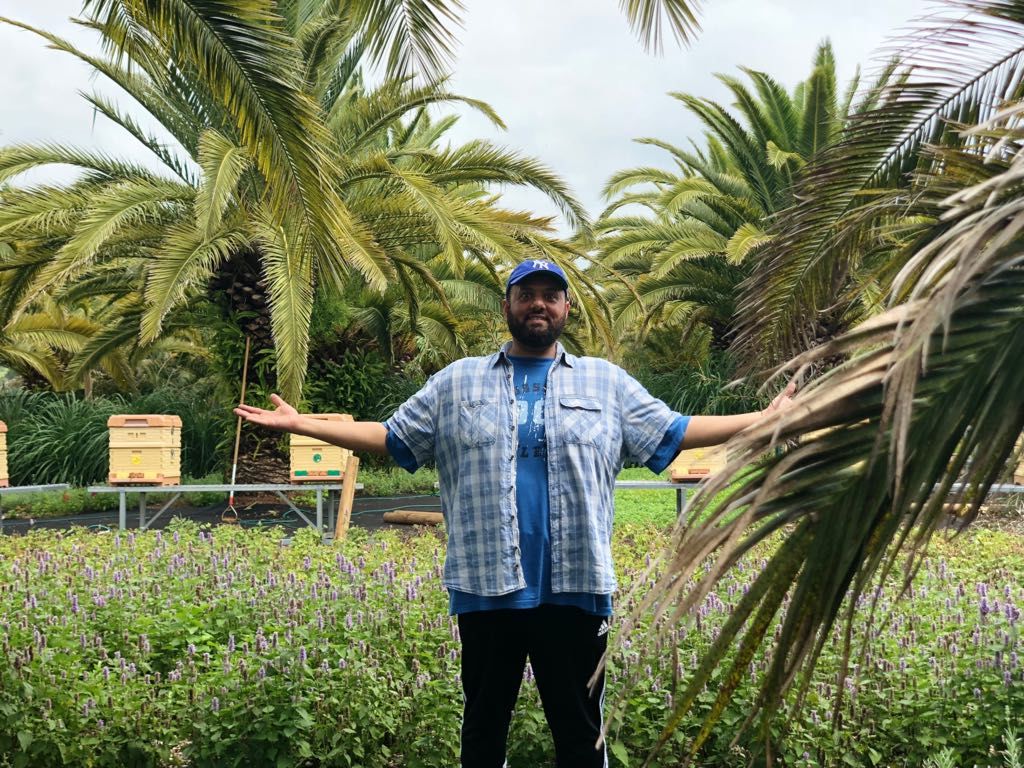
For more stories on manuka you can hear how I got on in New Zealand when I sourced Manuka from the South Island to stock at Balqees. A Culinary Tour Through New Zealand.
Look out for more posts from both Australia and New Zealand as i’ve got plenty more stories from beekeepers to share. Coming your way!









